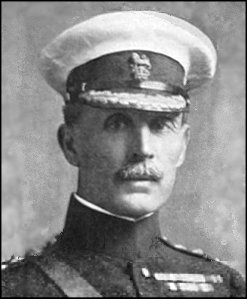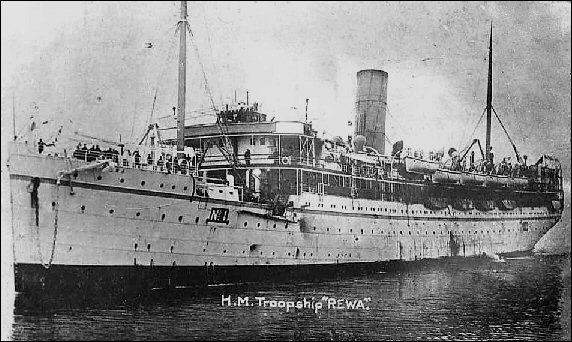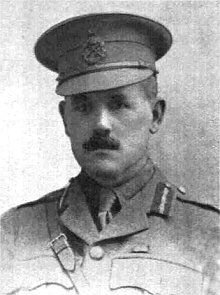2nd Battalion Worcestershire Regiment (1881-1913)
In 1881, on the amalgamation of the 29th (Worcestershire) and the 36th (Herefordshire) Regiments, the latter became the 2nd Battalion Regiment The Worcestershire Regiment. To summarise these changes: - 1694-Farrington's Regiment raised. 1702-Charlemont's Regiment raised. 1751-Changed to 29th Regiment and 36th Regiment. 1781-29th (Worcestershire) Regiment;36th (Herefordshire) Regiment. 1881-1st and 2nd Battalions The Worcestershire Regiment.

2nd Battalion Worcestershire Regiment Officers Rowing Crew - Winners of Officer Cup (Malta 1896)
Standing L to R: 2/Lieut. John Murray Reddie, Lieut. Hugh John Bartholomes, 2/Lieut. Ernest Charles Forbes Wodehouse, Captain Walter Dermott Holland
Seated L to R: Lieut. Jackson, Major Charles Coningham, Captain Coningsby Norbury
On the 3rd March 1904 Colonel E. C. Ingouville-Williams D.S.O., assumed command of the 2nd Battalion. On the 22nd October 1904 the 2nd Battalion embarked at Durban and disembarked at Colombo on the 5th November 1904. The battalion spent the next 2 years on Foreign Service in Ceylon. Throughout the years 1905/1906 the 2nd Battalion remained in Ceylon, building up a high standard of efficiency under the able command of Colonel Ingouville-Williams. The Battalion was quartered in Colombo, moving to camp at Diyatalawa among the hills for training and musketry. At Diyatalawa the Battalion by their own effort greatly improved the existing conditions. Among other notable efforts was the construction of a football ground by cutting away a hill-side and filling up a swamp, the work entirely carried out by the labour of the officers and men of the Battalion. Ceylon was a pleasant station, and there were many regrets when in 1906 it was decided to withdraw the British battalion from the garrison; and so on the 16th December 1906 the 2nd Battalion embarked at Colombo, after a few days by sea the battalion disembarked at Bombay on the 19th December 1906. The battalion then made their way to Ahmednagar arriving on the 21st December 1906. On the 10th October, 1907 at Ahmednagar; the 2nd Battalion Worcestershire Regiment were given new Colours by the Viceroy, The Earl of Minto. The old Colours, which had been presented by H.R.H. The Prince of Wales in Aldershot in 1894, were later laid up in Worcester Cathedral on the 22nd August 1913, after the return of the Battalion to England. |
Colonel E. C. Ingouville-Williams |
Soldiering in India was no longer the easy-going routine of the former century. The South African War had demonstrated to the Army in India as much as to the Staff at home the need for more modern methods of training; and the advent of Lord Kitchener as Commander-in-Chief was followed by a period of sweeping reforms. The training of all units was standardised and improved, and the severe “Kitchener Test” was instituted as a criterion of efficiency. The ”Kitchener Test” consisted of a long forced march in full kit by the whole battalion, followed by an attack practice. In December 1907 the 2nd Worcestershire carried out the “Kitchener Test” and gained high praise (The General Officer Commanding the 6th Division stating that the Battalion “fully maintained the high reputation of the Regiment and have justified the good opinion the G.O.C. has formed of them”). Next month the Battalion marched to Poona for training and took part in Divisional Manoeuvres. In March 1908 Colonel E. C. Ingouville-Williams completed his command and left the Battalion. Colonel Ingouville-Williams was succeeded by Lieutenant-Colonel H. de B. Hovell, D.S.O., who had transferred-from the 1st Battalion.
In November 1909 the Battalion changed station, moving from Ahmednagar to Jhansi.
In the May of 1910 King Edward VIIth died, and in June of the following year his son was crowned King as George Vth.
Then came a new departure in the history of the British Empire; for it was decided that the ceremony in London by which the King was crowned as Head of the English peoples should be followed by a like ceremony in India; and in the November of 1911 the accession of the King-Emperor and his Consort was proclaimed in his presence at the great Durbar which inaugurated the new capital at Delhi. Simultaneous proclamations were made throughout India. Owing to local conditions, the troops at Jhansi were not moved, and the 2nd Battalion took part in a durbar held at that station. In the trooping season of 1912/1913 the 1st and 2nd Battalions exchanged roles, the 2nd Battalion coming home from India and the 1st Battalion proceeding overseas. The 1st Battalion embarked at Southampton on the transport “Dongola” and sailed to Egypt, arriving at Alexandria in early in February 1913. A few weeks later the transport “Rewa” entered the Suez Canal carrying the 2nd Battalion homeward bound from Karachi; and many representatives of the 1st Battalion Worcestershire went over to Port Said to greet the sister Battalion.
|
H.M.T. Rewa |
2nd Battalion Worcestershire Regiment Officers (Jhansi, India - December 1911) Back row L to R: Lt. Gerald Johnston Lioyeatt Stoney, 2/Lt. Henry Stanley Lowe, 2/Lt. Cyril Charles Lilley, Lt. & QM. James Batchelor, |
|
Lieut.-Colonel C. B. Westmacott |
After the greetings at Port Said the transport “Rewa” continued her voyage home, and on the 5th March 1913, the 2nd Battalion Worcestershire landed at Southampton, after a tour of Foreign Service which had lasted more than seventeen years. With Lieutenant-Colonel C. B. Westmacott as Commanding Officer and Lieutenant B. C. Senhouse Clarke as Adjutant, the Battalion settled down to hard work at Aldershot in the 5th Brigade as part of the 2nd Division. The Aldershot Command was then held by General Sir Douglas Haig, and under the orders of that great soldier all ranks were perfected in their training for war. It was widely known that the European situation was dangerous. In 1911 the Moroccan crisis had brought danger of war, and the following years saw no abatement of that menace. Both Germany and France were passing new laws of Military service, were increasing their forces and improving their organisation. In this country there was no general belief in the certainty of war and no great preparation was attempted, but to many the danger was evident and the little Regular Army worked hard to perfect its preparation against the possible emergency.
|




